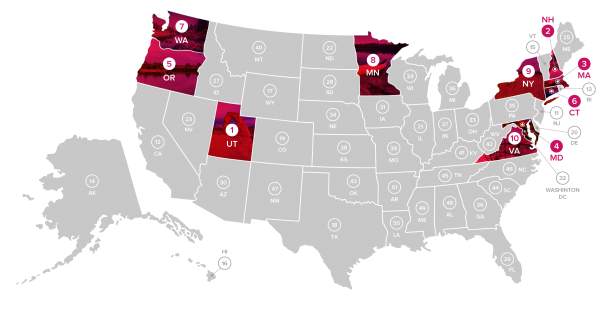Focus on UConn Funding Includes View of Money Paid to Football Coaches
/The UConn football season is underway, and UConn is in the news in a big way. It is, however, about not only prospects on the gridiron as prospects on the bottom line for the state’s flagship university. Officials describe the university as being under unfair and counterproductive attack by a budget recently adopted by the state legislature that would require substantial reductions in state funding. The budget is expected to be vetoed by the Governor, continuing the legislative stalemate that has prevented agreement on a state budget for the fiscal year that began on July 1. Also within the past week, UConn was among a handful universities portrayed as the poster children for the practice of paying multiple head football coaches simultaneously. UConn’s situation was listed as among the most costly.
The report, by The New York Times, indicated that “when the Huskies hired Randy Edsall last winter after three losing seasons under Bob Diaco, they got their once and future head coast for a reasonable $1 million salary.” The article went on to point out, however, that “firing Diaco triggered a $3.4 million buyout.” Thus, the University is paying $4.4 million in head coach salary this season, to two coaches – one employed by the university, the other not.
It could have been more costly.
“Even though the move was announced in December,” it was effective in January; “an effective end date in 2016 would have cost the Huskies $5 million. The newspaper notes that “if it had not given Diaco a richer buyout as part of a two-year (contract) extension he negotiated only seven months before he was fired,” the buyout would have been significantly smaller – only $800,000.”
Leading the list of colleges cited in the Times article was Texas, “on the hook for the salaries of current and former coaches” this season to the tune of $12.45 million. Next was Oregon, at $8.5 million; and Florida at $6.4 million.
Some doubted that Diaco would be fired, because of the continuing cost to the university of doing so. The website theuconnblog.com said when the firing was announced in late December that “The primary driver behind Diaco’s assumed job security was a substantial buyout owed to him had he been fired right after the season. With UConn’s strapped financial situation, it could ill-afford to be paying Diaco millions to not coach the team.”
Diaco, in January, became the highest paid assistant coach in Nebraska history when he was hired by that university to be the team’s defensive coordinator for $825,000 this year and $875,000 next year.
At the time of Diaco’s firing, UConn emphasized that taxpayers would not be responsible for the buyout.
"It's not taxpayer money," Michael Enright, who oversees communications for UConn athletics told the Hartford Courant at the time. "It's from division of athletics revenues. So ticketing, concessions, licensing, conference revenue."
The Courant went on to report that “sports-related income isn't the only source of revenue feeding the department's $72 million budget. For the 2014-15 school year, student fees provided more than $10 million and the university contributed $18 million, according to a survey by USA Today. The school has taken pains to say the university's share comes from segregated accounts that do not include tuition or state funds. But critics see the university's and athletics department's budgets as homogenous taxpayer-supported piles of money.”
The state provides approximately 28 percent of the revenue funding UConn's overall $1.3 billion budget, the Courant noted, adding that Diaco's salary was $1.7 million last year, making him the third-highest-paid state employee, trailing only the UConn head basketball coaches.
In mid-2016, Diaco and his wife have announced "they will contribute $250,000 to the University to help fund the construction of several new UConn athletic facilities,” according to the UConn website. The Diaco gift, it was announced, would be used to help build new facilities for the UConn men’s and women’s soccer, baseball, and softball teams.




 Orders. Most historians agree the Fundamental Orders are significant, but the state of Connecticut decided in 1959 to call itself the Constitution State based on the premise that the Fundamental Orders were the first constitution in North America.
Orders. Most historians agree the Fundamental Orders are significant, but the state of Connecticut decided in 1959 to call itself the Constitution State based on the premise that the Fundamental Orders were the first constitution in North America.


 The analysis points out that a main reason why people don’t have access to broadband internet is due to a lack of income. Cited is a Pew Research poll that found 23 percent of people making under $30,000 per year don’t use the internet, possibly because of the high price for something they don’t consider a basic need. Most rural schools across the country still lack access to fiber and pay more than twice as much for bandwidth.
The analysis points out that a main reason why people don’t have access to broadband internet is due to a lack of income. Cited is a Pew Research poll that found 23 percent of people making under $30,000 per year don’t use the internet, possibly because of the high price for something they don’t consider a basic need. Most rural schools across the country still lack access to fiber and pay more than twice as much for bandwidth.

 There are a series of steps that your body goes through to develop immunity through vaccination, the
There are a series of steps that your body goes through to develop immunity through vaccination, the 


 In Stamford, CHDI assisted in training school social workers and psychologists to deliver
In Stamford, CHDI assisted in training school social workers and psychologists to deliver 

 The National Institutes of Health estimates that between six to 17 percent of school-age children have some form of dyslexia, although not all of those students have been identified by their schools.
The National Institutes of Health estimates that between six to 17 percent of school-age children have some form of dyslexia, although not all of those students have been identified by their schools.


































